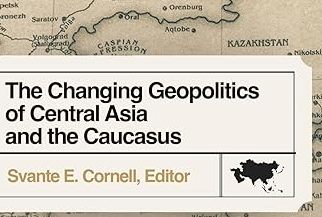CENTRAL ASIAN WOMEN MIGRANTS DEAL WITH GLOBAL ECONOMIC CRISIS
By Rafis Abazov (10/28/2009 issue of the CACI Analyst)
The global economic crisis of 2008 and 2009 has intensified the public discourse over the migration of a very important and vulnerable group of the population in Central Asia – women migrant workers – and over public policy choices. The debates often focus on the merits of competing policy approaches and policy actions: should the national governments, NGOs and international donors in Central Asia continue supporting migrant workers by negotiating regional free trade and a free migration zone, and by collaborating on developing the regional labor market in the CIS? Or should Central Asian governments accept a greater responsibility for the well-being of their citizens, especially women, and work to create a better business environment and more jobs locally?
BACKGROUND: The 2008-2009 global financial and economic crisis has had a massive labor-adjusting effect on the labor markets in the CIS in general and on women-clustered segments of the labor market in particular. This impact reversed a decade-long trend in job creation across the region.
MONGOLIA TO BECOME CENTRAL ASIA’S MINING EL DORADO?
By John Daly (10/28/2009 issue of the CACI Analyst)
On October 6 Mongolia’s government signed an agreement with Canada’s Ivanhoe Mines Ltd and London-based Rio Tinto mining companies to develop what will be the world’s largest copper mine. The agreement follows six years of torturous negotiations between Ulaanbaatar and the foreign consortiums, but the imminent establishment of the US$ 4 billion Oyuu Tolgoi ("Turquoise Hill") mining site is expected to yield a billion pounds of copper and 330,000 ounces of gold every year for at least the next four decades, with peak output of more than 725,000 tons of copper annually projected to occur within six years after start-up.
BACKGROUND: While Mongolia’s economy was traditionally based on herding and agriculture, the country also has some of Asia’s richest deposits of minerals and neighboring China’s rising demand for minerals has underpinned its current mining boom.
THE EU’S CONFLICT PREVENTION FAILURE IN GEORGIA
By Nicu Popescu (10/14/2009 issue of the CACI Analyst)
On September 30, the EU fact-finding mission published its report on the Russian-Georgian war in August 2008. The report argues that Russia is responsible for a number of illegal acts in Georgia’s conflict zones, but that the escalation to large-scale hostilities on 7 August came following Georgia’s decision to launch an attack on South Ossetia.
TAJIKISTAN REACTS TO INCREASING UNREST IN AFGHANISTAN
By Dmitry Shlapentokh (10/14/2009 issue of the CACI Analyst)
The situation in Afghanistan is becoming increasingly grave, at least from the perspective of the Western alliance. The Central Asian states bordering Afghanistan, Tajikistan being a prime example, seem increasingly alarmed, implying that they may put their hopes to Russia for security guarantees. Tajikistan nevertheless recently demonstrated that its elite does not trust anyone, Russia included, and is possibly looking for other ways of dealing with the Taliban threat.



 Silk Road Paper S. Frederick Starr,
Silk Road Paper S. Frederick Starr,  Book Svante E. Cornell, ed., "
Book Svante E. Cornell, ed., "